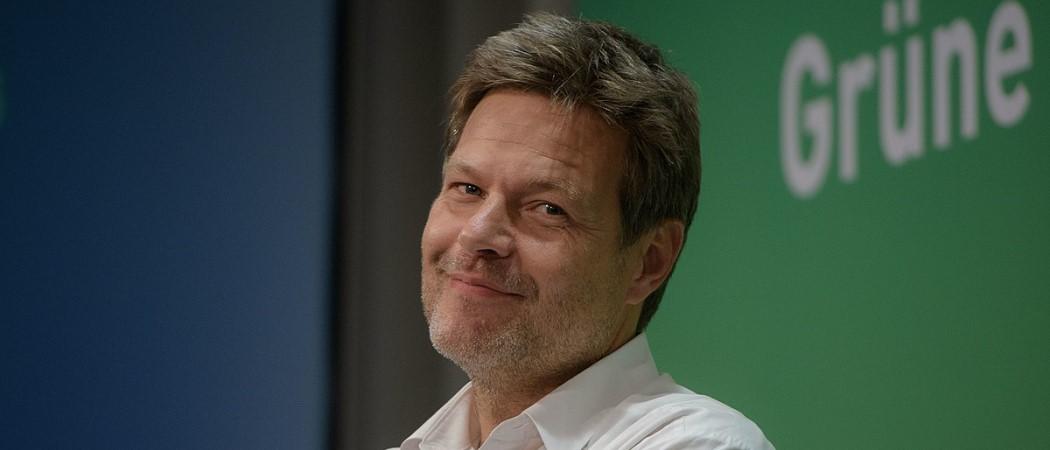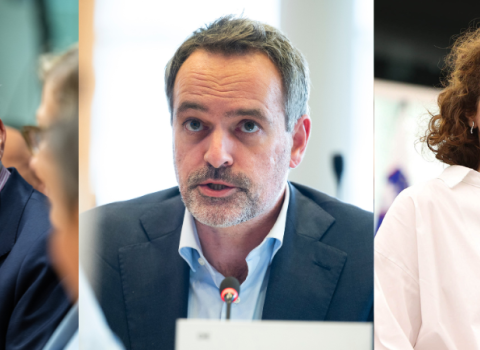After a decade of controversy and underinvestment in research, the strategy was announced on Monday by economy minister Robert Habeck

Robert Habeck, Vice-Chancellor, Government of Germany
Germany’s economy ministry has unveiled a long-term vision for carbon capture, storage and use, opening the way for captured CO2 to be stored underground or used in another industry. A separate bill will amend the CO2 storage act, enabling it to be transported.
Announcing the plan, federal economy minister Robert Habeck said that the changes are “a pragmatic and responsible decision. The technology is important for the competitiveness of Germany as an industrial location,” and “abandoning it would put us at a competitive disadvantage and cost us dearly,” he said.
The focus is on funding research on technologies for managing difficult to capture or unavoidable emissions, with the draft bill reducing bureaucracy involved in getting approval to build CO2 pipelines, for example. Other laws will be updated to allow exploration for offshore storage sites, with the except of marine protected areas.
“With this authorisation, we are catching up with our European neighbours such as Norway and many other countries,” said Habeck. “We are also enabling German companies to build up know-how in this area and thus secure future value creation with [carbon capture and use] technology.”
The fine print of the strategy is still being discussed among different governmental departments. A ministry spokesperson told Science|Business that work is being done “at full throttle.”
Carbon storage remains controversial and has divided European governments. Countries including Latvia, Lithuania, Slovenia, and Finland have banned CO2 storage outright. However, the European Commission and national governments have been funding projects to scale up the technology.
Environmental groups, researchers and scientists worry technology development will falter due the cost and public mood.
Controversy
Currently, power plants or factories equipped with modern carbon capture equipment can remove around 85% of CO2 from flue gas. Pipes transport the carbon to underground storage sites, usually exhausted oil wells.
Advocates say that this offers hard-to-decarbonise industries a way to meet emissions targets. “There are certain industries like cement like lime [production], where we currently don't see any other real possibilities to get rid of process-based emissions,” said Vicki Duscha, head of climate policy at the Fraunhofer Institute for Systems and Innovation Research. “It's becoming more obvious that we need to find solutions that include negative emissions.”
But environmental groups such as WWF Germany are worried the carbon might leak and could instead delay the carbon transition. “[Our] main concern is that carbon capture and storage will be applied to the energy sector, which leads to a lock-in of fossil fuels and fossil infrastructure,” said Lisa-Maria Okken, climate and energy policy adviser at WWF Germany. “Our position is that carbon capture and storage may only be applied to the industry sector to reduce unavoidable process emissions,” she said.
Other groups remain fundamentally against the technology being used in Germany. Earlier this year 11 citizen movements and non-governmental organisations formed an alliance against the upcoming strategy, calling it a “sham solution.”
North Sea
Countries in northwest Europe seems to be the most enthusiastic about the technology. In November 2023 France released its own draft carbon management strategy for industry feedback, while countries around the North Sea are looking to use empty oil fields to store captured carbon.
In March 2023 the UK government announced £20 billion to support clusters that can store 20 to 30 megatonnes of CO2 a year by 2030. The Netherlands has launched several projects such as Porthos at the port of Rotterdam, which aims to store approximately 2.5 megatonnes of CO2 at an empty offshore oil field every year for 15 years. Denmark, Iceland and Ireland have projects at different stages of readiness.
Norway by far leads Europe on carbon storage. One project, Northern Lights, signed contracts to receive liquefied CO2 from other countries this year. This will be stored in a reservoir under the Norwegian seabed. In January 2023 Habeck travelled to Norway to visit a cement factory in Brevik using carbon capture to reduce its emissions.
The European Commission has invested more than €540 million in the technology since 2007. In February 2024 it published an industrial carbon management strategy, with a goal of having a storage capacity of at least 50 million tonnes per year by 2030.
This target was first proposed as part of the Net Zero Industry Act which is working its way through the European Parliament. That act predicts that Europe will need to invest €3 billion in carbon storage facilities by the end of the decade.
Another innovation fund set up by the EU emissions trading system directive has so far given more than €3.3 billion in grants to capture and use projects. Horizon Europe is focusing on research to improve the efficiency and feasibility of CO2 removal technologies, their commercialisation and scale-up to market.
Other funding sources include the Connecting Europe Facility, which has granted around €680 million to CO2projects of common interest, and the European Investment Bank, which has included CO2 capture in its €45 billion financing package to support the Green Deal industrial plan.
Local bans
That Germany has a carbon storage law at all is down to an EU directive that required member states to legislate. In 2009 the government drafted a law, but protests from voters and regional governments led to several amendments, with the final version passing in 2012.
Ironically, one of the loudest anti-CCS voices at the time was Habeck, who was then the energy transition minister in the northern state of Schleswig-Holstein. The final version of the federal law allowed state governments to prevent carbon being stored in certain regions. This led Habeck and other states to ban carbon storage outright.
There followed was a relatively fallow period for carbon capture and storage research in Germany. A national report on implementing the EU directive noted that no sites had been found to store CO2 Only at one pilot site near Berlin was CO2 injected into the ground, but research there stopped in 2017.
Some carbon capture projects did make headway however. One was the Geostor project, investigating how much CO2 could be stored in North Sea off Germany.
The project benefitted from federal funding under a consortia called CDRmare. “We kind of sneaked in,” said Klaus Wallmann of the Geomar Helmholtz Centre for Ocean Research in Kiel. “The official policy then was still that we don't fund carbon capture and storage projects.”
Research took off in 2019, when a group of research and industry figures published a position paper suggesting Germany reconsider using carbon capture and storage for hard-to-decarbonise industries. These thoughts were echoed by then-chancellor Angela Merkel later that same year.
By the time the current government came to power in 2021, the technology had started to be seen as a pragmatic way of decarbonising difficult sectors of the economy.
“Now, policymakers are really happy that Geostor exists,” Wallmann said. He has been invited to multiple meetings with policymakers to discuss the carbon management strategy. Even the sceptical Green party voted at its party congress last November to consent to carbon capture projects in certain circumstances.
Economics
Despite the political change of heart, the economics still worry Wallmann. “My fear is that carbon capture and storage will fail in Germany, and maybe also in Europe, because of the cost issue,” he said.
According to Fraunhofer, its costs around €1,000 per ton to remove carbon from industrial processes. This is far higher than the license to release CO2 into the atmosphere under the EU’s Emissions Trading Scheme, which was €80 per ton in December last year.
“The prices are basically not high enough,” said Duscha. As carbon capture takes off in Europe, the EU will need to judge whether to include captured carbon in emissions trading calculations. “There we have some difficulties in the instrument itself,” Duscha said. “We need, of course, to further design it.”
Limiting emissions trading permits over the next decade will raise their price, which may make capturing carbon the cheaper option. But industries will need the certainty of Germany’s carbon management strategy to plan ahead. “It’s also a matter of developing the infrastructure for storage and transport,” said Duscha. “If firms knew that these two parts would be available, then of course it's easier to decide to invest in capture installation.”





 A unique international forum for public research organisations and companies to connect their external engagement with strategic interests around their R&D system.
A unique international forum for public research organisations and companies to connect their external engagement with strategic interests around their R&D system.